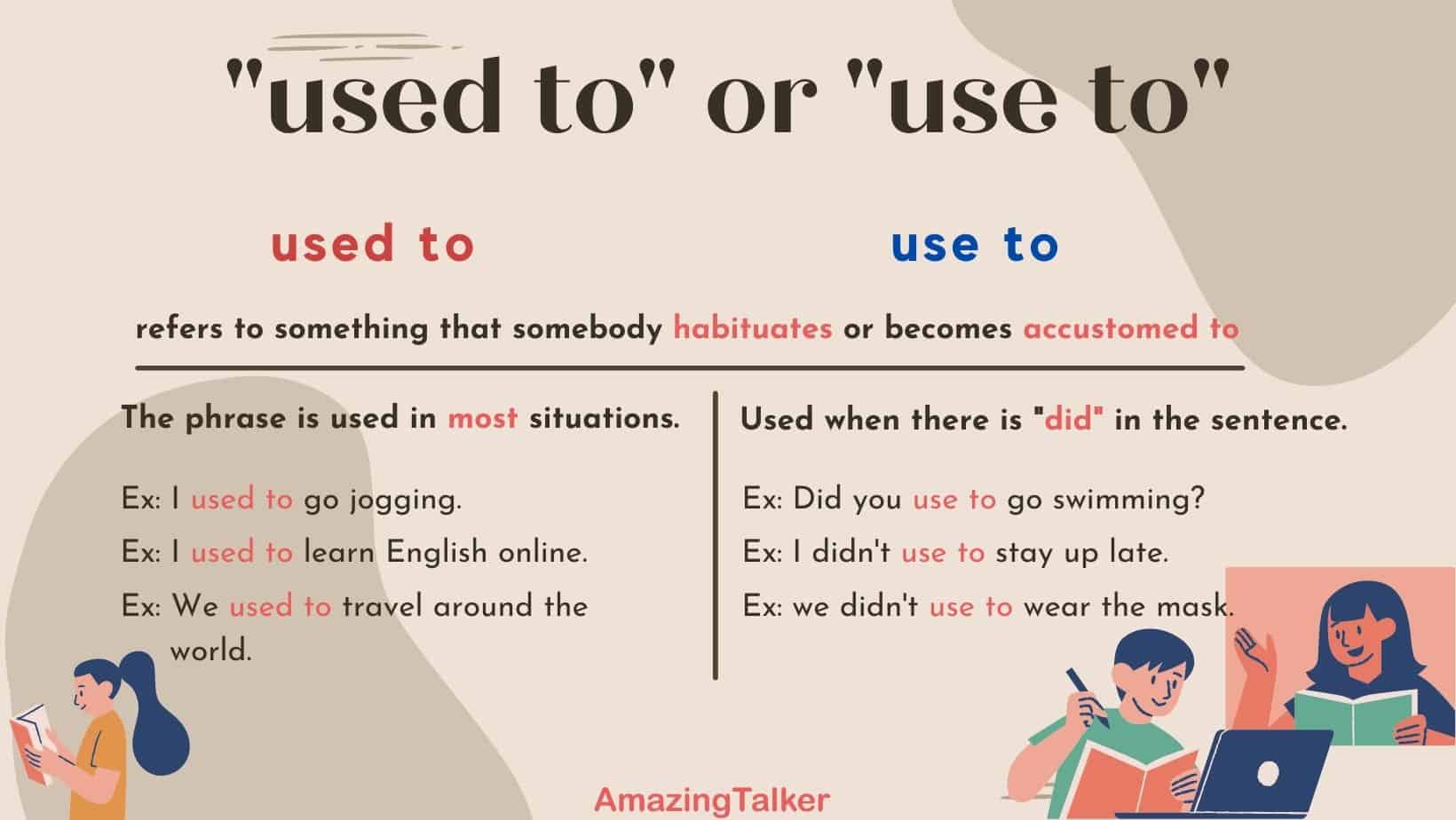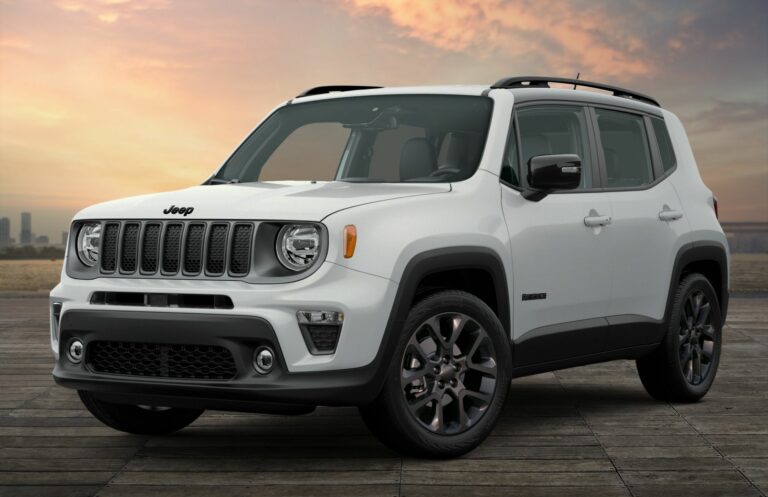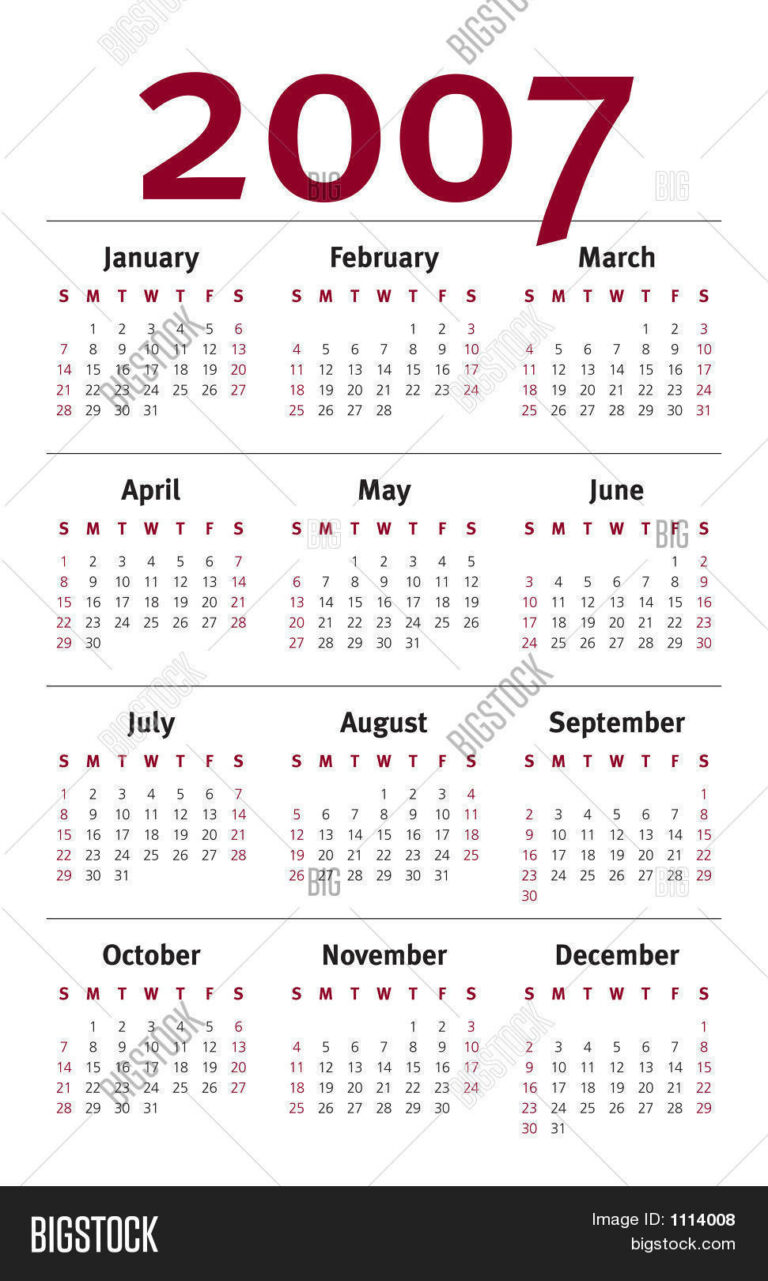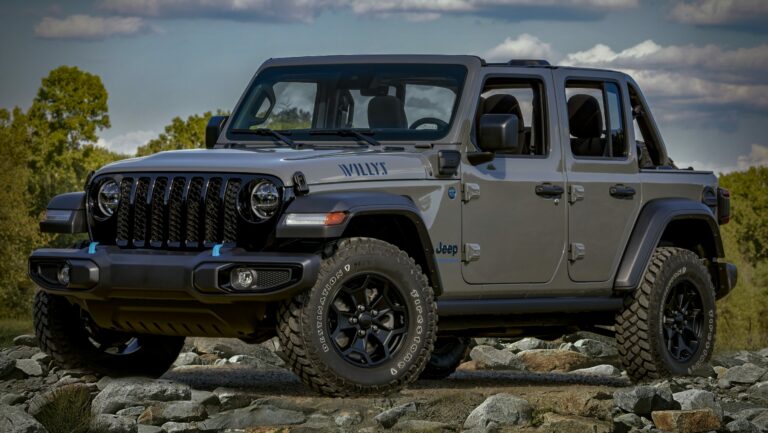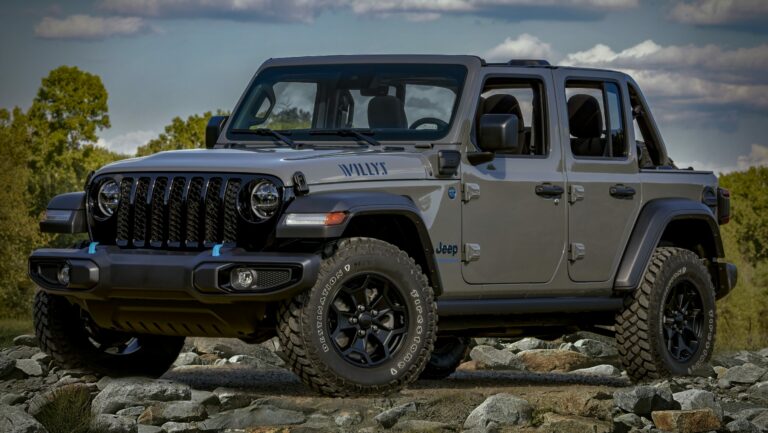Used CJ5 Jeep Parts For Sale: Keeping the Legend Alive
Used CJ5 Jeep Parts For Sale: Keeping the Legend Alive jeeps.truckstrend.com
The Jeep CJ5 is more than just a vehicle; it’s an icon, a symbol of rugged American ingenuity, adventure, and freedom. Produced from 1955 to 1983, the CJ5 evolved through various iterations, engine options, and trim levels, but its core spirit of go-anywhere capability remained constant. Today, thousands of these venerable machines are still on the road, traversing trails, cruising country roads, or meticulously restored in collectors’ garages. However, like any classic vehicle, maintaining a CJ5 requires a steady supply of parts. While some components are still reproduced, many are not, making the market for Used CJ5 Jeep Parts For Sale not just relevant, but absolutely vital for enthusiasts, restorers, and everyday owners alike.
This comprehensive guide delves into the world of used CJ5 parts, exploring why they are essential, where to find them, what to look for, and how to navigate the process to keep your beloved Jeep legend alive and thriving.
Used CJ5 Jeep Parts For Sale: Keeping the Legend Alive
The Enduring Appeal of the CJ5 Jeep
The CJ5’s enduring popularity stems from its robust simplicity, timeless design, and unmatched off-road prowess. From its early "Hurricane" F-head engines to the later AMC inline-sixes and V8s, the CJ5 was built to tackle challenging terrains with minimal fuss. Its compact size, short wheelbase, and solid axles made it incredibly agile, earning it a loyal following among off-roaders and utility vehicle enthusiasts. Decades after its production ceased, the CJ5 continues to captivate, leading to a strong demand for parts to restore, repair, and customize these classic Jeeps.
Why Choose Used CJ5 Parts? Benefits and Advantages
Opting for used parts often comes with a distinct set of advantages, particularly for a vintage vehicle like the CJ5:
- Cost Savings: This is often the primary motivator. Used parts are typically significantly cheaper than new reproductions or New Old Stock (NOS) parts, allowing owners to undertake repairs or restorations without breaking the bank.
- Authenticity and Originality: For purists and concours restorers, used original parts are invaluable. They allow the vehicle to retain its factory-correct appearance and feel, preserving its historical integrity. This is especially true for interior components, body panels with specific stamping, or unique trim pieces.
- Availability of Discontinued Parts: Many CJ5 components, especially those specific to earlier models or less common options, are no longer manufactured. The used market is often the only source for these otherwise unobtainable items.
- Sustainability: Choosing used parts is an environmentally conscious decision. It reduces waste, conserves resources, and lowers the carbon footprint associated with manufacturing new components.
- "Character" and Patina: For some, a used part with a bit of wear or a unique patina adds to the vehicle’s story and character, especially for a rugged vehicle like a Jeep that is meant to show its age gracefully.
- Quick Solutions: Sometimes, a used part can be sourced and installed much faster than waiting for a new part to be manufactured or shipped from a distant supplier, getting your Jeep back on the road sooner.
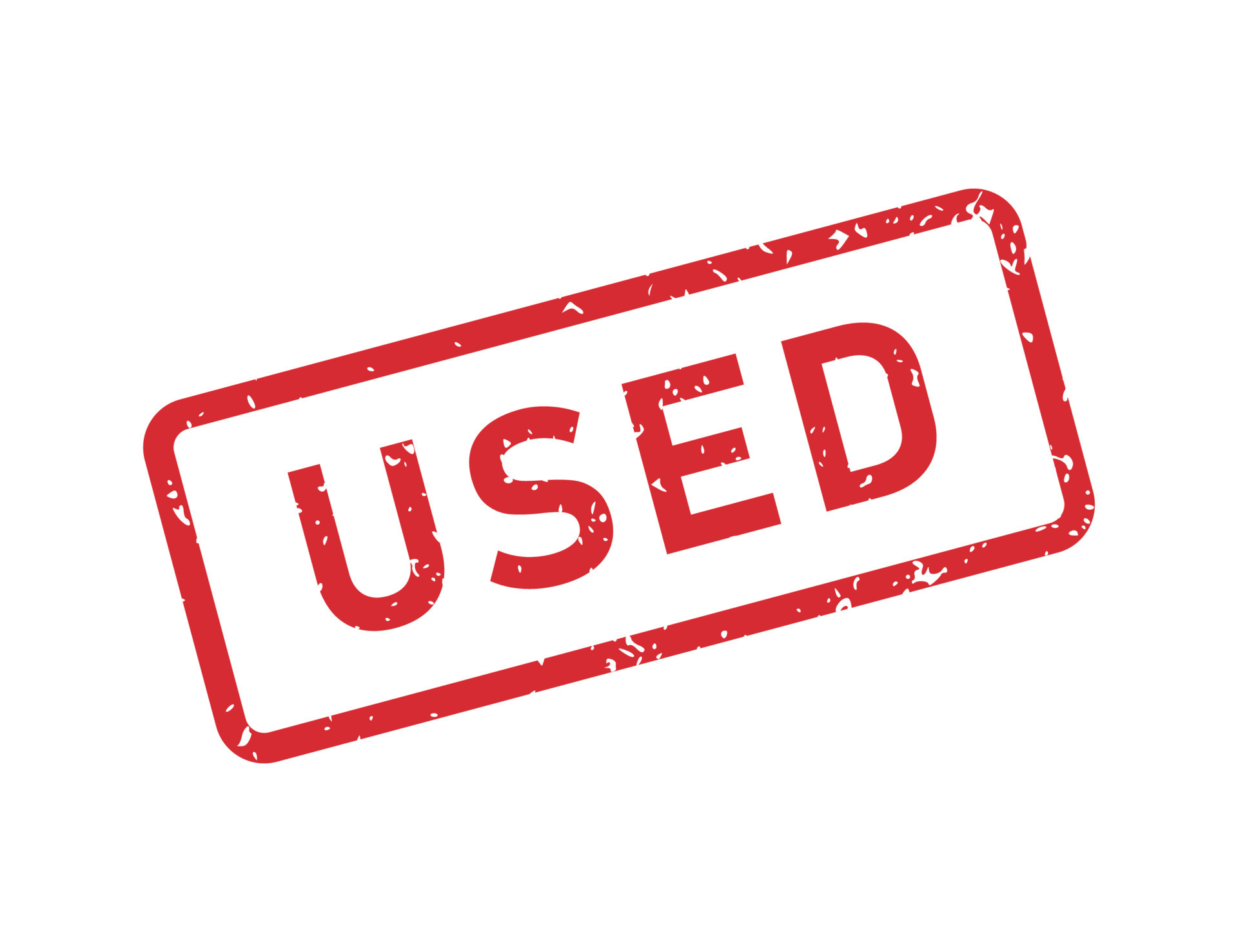
Key Categories of Used CJ5 Parts
The range of used CJ5 parts available is vast, covering virtually every component of the vehicle. Here’s a breakdown of common categories:
- Body Panels & Exterior Components: This includes fenders, hoods, grilles, tailgates, door frames (for models with doors), windshield frames, and even entire body tubs. Rust is a major factor here, so thorough inspection is crucial.
- Drivetrain & Axles: Transmissions (T90, T14, T15, T18, T4, T5, TF999/904), transfer cases (D18, D20, D300), front and rear axles (Dana 25, 27, 30, 44), differential carriers, ring and pinion sets, and axle shafts are frequently sought after.
- Engine Components: Blocks, cylinder heads, intake manifolds, exhaust manifolds, carburetors, alternators, power steering pumps, and even complete engine assemblies (Hurricane, Dauntless V6, AMC I4/I6/V8) are available. Compatibility with your specific engine variant is paramount.
- Interior & Electrical: Seats, seat frames, dashboards, gauge clusters, steering columns, steering wheels, heater boxes, wiring harnesses, switches, and interior trim pieces are often needed to complete a restoration or repair.
- Suspension & Steering: Leaf springs, shackle sets, shock mounts, steering boxes, tie rods, drag links, and pitman arms are common wear items that can be sourced used.
- Chassis & Frame Components: While less common to buy used due to potential damage, frame sections or specific crossmembers can sometimes be found.
- Accessories & Trim: Hardtops, soft top frames, bumpers, winches, tow hitches, light guards, mirrors, and unique badging or trim pieces can add authenticity and functionality.
Where to Find Used CJ5 Jeep Parts: Sourcing Strategies
Finding the right used part can sometimes feel like a treasure hunt, but several reliable avenues exist:
-
Online Marketplaces & Classifieds:
- eBay: A vast global marketplace with a wide array of parts. Use specific search terms (e.g., "CJ5 Dana 20 transfer case," "1972 CJ5 grille"). Pay attention to seller ratings, detailed descriptions, and multiple photos.
- Craigslist/Facebook Marketplace: Excellent for local finds, potentially allowing for in-person inspection and pickup, saving on shipping costs. Be cautious of scams and always meet in a safe, public place.
- Dedicated Forums & Social Media Groups: Facebook groups like "CJ5 Owners," "Jeep CJ Parts For Sale," or forums on websites like "JeepForum.com" or "WillysTech.com" are goldmines. Members often sell parts they’ve removed from their own projects or have lying around. These communities also offer expert advice on compatibility and condition.
-
Specialized Jeep Salvage Yards / Wreckers:
- There are businesses dedicated solely to dismantling Jeeps. These yards often have a deep inventory of specific models like the CJ5 and knowledgeable staff who can help you identify the correct part. Prices might be slightly higher than private sellers, but the expertise and organized inventory can be worth it. A quick online search for "Jeep salvage yard [your state]" can yield results.
-
Jeep Swap Meets & Car Shows:
- Attending events like "Jeep Beach," "Bantam Jeep Heritage Festival," or local 4×4 swap meets can be incredibly fruitful. You can inspect parts firsthand, negotiate prices, and network with other enthusiasts. This is often the best place to find rare or unique items.
-
Local Classifieds & Word-of-Mouth:
- Don’t underestimate old-school methods. Check local newspapers, community bulletin boards, or simply ask around at local off-road clubs or mechanic shops. Many valuable parts are still sitting in barns or garages, waiting to be discovered.
Important Considerations When Buying Used CJ5 Parts
Purchasing used parts requires diligence. Here’s what to keep in mind:
- Condition Assessment: This is paramount.
- Rust/Corrosion: Especially for body panels and frame components. Minor surface rust is often acceptable, but deep, pitting rust or structural rust-through should be avoided unless you’re prepared for extensive fabrication.
- Cracks/Damage: Inspect for cracks in cast iron (engine blocks, manifolds) or welds (axle housings). Look for dents, bends, or deformation in sheet metal.
- Wear & Tear: For mechanical components (gears, bearings, bushings), excessive wear indicates a need for rebuilding, which adds to the cost. Ask about mileage or hours of operation if possible.
- Functionality: For electrical components (gauges, switches), ask if they were tested or known to be working before removal.
- Compatibility: CJ5s changed significantly over their 28-year production run.
- Year Specificity: Parts often differ by year. A 1970 grille is different from a 1978.
- Engine Type: Engine accessories, mounts, and exhaust components vary greatly between the F-head, Hurricane, Dauntless V6, and AMC I6/V8 engines.
- Transmission/Transfer Case: Bell housings, input shafts, and shifters are specific to the transmission and transfer case combination.
- Axle Ratios/Widths: While many CJ5s used Dana 30 front and Dana 44 rear, widths and specific internals can vary.
- VIN (Vehicle Identification Number): If buying major components, getting the VIN of the donor vehicle can help cross-reference parts with factory diagrams.
- Seller’s Reputation:
- Check online reviews, forum feedback, or ask for references.
- Communicate clearly and ask detailed questions. A reputable seller will be happy to provide more information and photos.
- Shipping & Logistics:
- Large items (body tubs, axles, engines) can be expensive to ship. Factor this into your total cost. Freight shipping is often required.
- Ensure proper packaging to prevent damage during transit.
- Discuss insurance for high-value items.
- Return Policies: Most used parts are sold "as-is." Understand the seller’s policy before you buy. Get it in writing if possible.
Tips for Successful Used Parts Acquisition
- Do Your Homework: Before you start searching, identify the exact part you need, including its year, model, and any specific variants. Look up part numbers if possible.
- Be Patient: Finding the perfect part in excellent condition at a fair price can take time. Don’t rush into a purchase.
- Haggle Respectfully: Many sellers of used parts are open to negotiation, especially at swap meets or for larger purchases.
- Inspect Thoroughly (In-Person): If you can see the part in person, bring a flashlight, a magnet (to check for bondo/filler), and possibly some basic tools to check for play in bearings or joints.
- Request Detailed Photos/Videos (Online): If buying remotely, ask for multiple high-resolution photos from different angles, highlighting any known defects or areas of concern. A short video showing a part’s functionality (e.g., a steering box turning smoothly) can be invaluable.
- Factor in Refurbishment Costs: Unless it’s a "bolt-on and go" part, assume you’ll need to clean, paint, or perform minor repairs. Budget for this.
- Join Online Communities: The collective knowledge of CJ5 enthusiasts is immense. Post "wanted" ads, ask for advice on specific parts, or seek recommendations for sellers.
Challenges and Solutions
- Challenge: Extensive Rust/Corrosion.
- Solution: For non-structural parts, evaluate if the rust is manageable with wire brushing, rust converter, and paint. For structural parts (frames, tubs), seriously consider if the repair cost outweighs buying a better condition part or a new reproduction tub.
- Challenge: Incorrect Part Received/Compatibility Issues.
- Solution: Double-check part numbers and year compatibility with the seller before purchase. Ask for photos of any identifying marks. If an error occurs, try to work with the seller for a return or exchange, especially if they misrepresented the item.
- Challenge: High Shipping Costs for Large Items.
- Solution: Prioritize local pickup if possible. Explore freight shipping options for larger items. Sometimes, combining multiple purchases from one seller can make shipping more cost-effective.
- Challenge: Scammers or Misrepresented Items.
- Solution: Use platforms with buyer protection (like eBay). Avoid direct bank transfers for unknown sellers. If something seems too good to be true, it probably is. Always verify legitimacy and communication.
Estimated Price Range Table for Common Used CJ5 Jeep Parts
Please note: Prices for used parts vary wildly based on condition, rarity, location, and seller. This table provides very rough estimates in USD for parts in fair to good, usable condition, not perfectly restored or NOS.
| Part Category | Example Part (Year/Model Specificity Varies) | Estimated Used Price Range (USD) | Notes |
|---|---|---|---|
| Body Panels | Front Fender (each) | $100 – $350 | Rust is common; price depends on severity. |
| Hood | $150 – $400 | Look for bends, rust around hinges. | |
| Grille (e.g., 76-83 plastic) | $75 – $200 | Can be cracked; earlier steel grilles (pre-72) are more sought after. | |
| Body Tub (complete, minimal rust) | $800 – $3000+ | Significant price variation; shipping is expensive. | |
| Drivetrain | Dana 20 Transfer Case (complete) | $250 – $600 | Check for fluid leaks, shifter mechanism. |
| T15/T18 Transmission (complete) | $300 – $800 | Inspect input/output shafts, shifting action. | |
| Dana 44 Rear Axle (complete) | $400 – $1000 | Check for bent tubes, bearing play, gear ratio. | |
| AMC 304 V8 Engine (long block) | $500 – $1500 | Condition varies widely; assume need for rebuild. | |
| Interior/Electrical | Front Seats (pair, frames only) | $100 – $300 | Upholstery usually needs replacement; check frame integrity. |
| Dashboard (metal) | $75 – $250 | Check for holes, rust, cutouts. | |
| Gauge Cluster | $50 – $200 | Test functionality if possible. | |
| Suspension/Steering | Leaf Springs (set of 4) | $150 – $400 | Check for broken leaves, sag. |
| Steering Box (e.g., Saginaw) | $100 – $350 | Check for excessive play, leaks. | |
| Miscellaneous | Hardtop (complete, good condition) | $400 – $1000+ | Condition of seals, glass, cracks. Shipping is a major factor. |
| OEM Steel Wheels (each) | $25 – $75 | Check for bends, rust. |
Frequently Asked Questions (FAQ)
Q1: Are used CJ5 parts reliable?
A1: Their reliability varies greatly. Mechanical parts like transmissions or engines often require inspection and potentially rebuilding. Body parts can be reliable if rust is minimal. Always assume used parts might need some work or refurbishment, but many original parts are built to last.
Q2: How do I know if a used part will fit my specific CJ5?
A2: Research is key. Know your CJ5’s exact year, engine type, transmission, and axle configurations. Consult online forums, parts manuals, or ask knowledgeable sellers for compatibility confirmation. Providing the VIN of your Jeep or the donor Jeep can often help.
Q3: Is it safe to buy used engine or transmission components?
A3: It can be, but with caution. For major components like complete engines or transmissions, it’s best to assume they will need a rebuild unless explicitly stated and proven to be running well. For smaller components like manifolds or accessories, visual inspection for cracks and damage is crucial.
Q4: What’s the difference between "used," "NOS," and "remanufactured" parts?
A4:
- Used: A part that has been removed from another vehicle and is sold in its original, used condition.
- NOS (New Old Stock): A brand new part that was manufactured long ago but never installed. It’s factory original and unused, often still in its original packaging. These are usually more expensive than used parts.
- Remanufactured: An old, worn part that has been professionally disassembled, inspected, worn components replaced, and reassembled to meet or exceed original specifications. These often come with a warranty.
Q5: Can I return a used part if it doesn’t work or doesn’t fit?
A5: This depends entirely on the seller’s policy. Most private sellers of used parts sell them "as-is," meaning no returns. Reputable salvage yards or businesses might offer a limited warranty or return period. Always clarify the return policy before making a purchase.
Conclusion
The world of Used CJ5 Jeep Parts For Sale is a vibrant and essential ecosystem that keeps these legendary vehicles rolling. It offers a unique blend of cost-effectiveness, historical authenticity, and the thrill of discovering hard-to-find components. While it requires patience, careful research, and diligent inspection, successfully sourcing used parts is incredibly rewarding. It allows enthusiasts to preserve the legacy of the CJ5, ensuring that its spirit of adventure continues to inspire for generations to come. So, whether you’re embarking on a full restoration or just need a small replacement, dive into the used parts market – your CJ5 will thank you.
